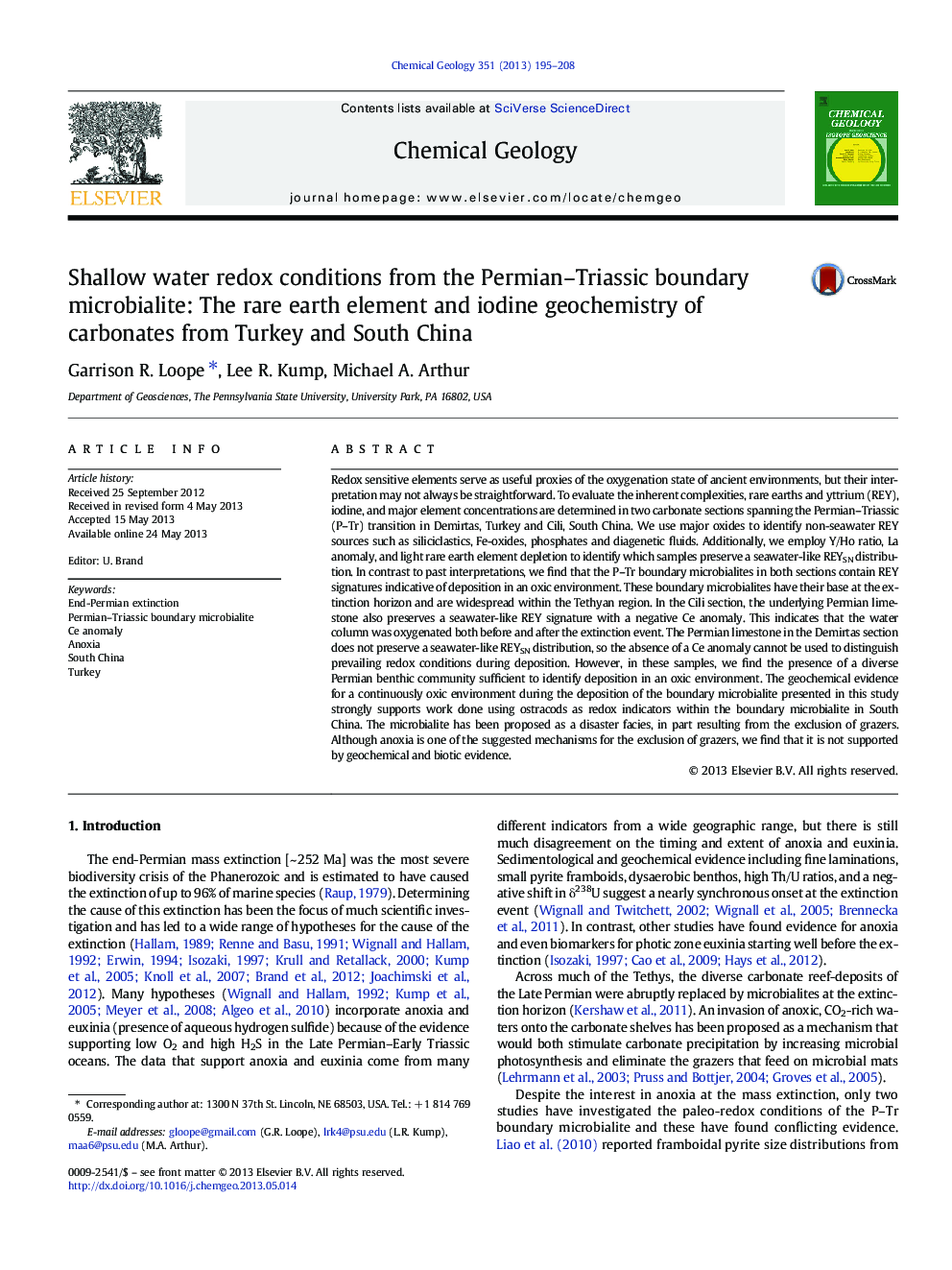| کد مقاله | کد نشریه | سال انتشار | مقاله انگلیسی | نسخه تمام متن |
|---|---|---|---|---|
| 6436916 | 1637618 | 2013 | 14 صفحه PDF | دانلود رایگان |

- We report REE, I, and major element data from PTB microbialites in Turkey and China.
- We use Ce anomaly and iodine as redox indicators in carbonates.
- We use Y/Ho and La anomaly to fingerprint the REE source.
- Boundary microbialites were not deposited in anoxic conditions as has been suggested.
- Ce anomaly in many carbonates may be explained with siliciclastics and diagenesis.
Redox sensitive elements serve as useful proxies of the oxygenation state of ancient environments, but their interpretation may not always be straightforward. To evaluate the inherent complexities, rare earths and yttrium (REY), iodine, and major element concentrations are determined in two carbonate sections spanning the Permian-Triassic (P-Tr) transition in Demirtas, Turkey and Cili, South China. We use major oxides to identify non-seawater REY sources such as siliciclastics, Fe-oxides, phosphates and diagenetic fluids. Additionally, we employ Y/Ho ratio, La anomaly, and light rare earth element depletion to identify which samples preserve a seawater-like REYSN distribution. In contrast to past interpretations, we find that the P-Tr boundary microbialites in both sections contain REY signatures indicative of deposition in an oxic environment. These boundary microbialites have their base at the extinction horizon and are widespread within the Tethyan region. In the Cili section, the underlying Permian limestone also preserves a seawater-like REY signature with a negative Ce anomaly. This indicates that the water column was oxygenated both before and after the extinction event. The Permian limestone in the Demirtas section does not preserve a seawater-like REYSN distribution, so the absence of a Ce anomaly cannot be used to distinguish prevailing redox conditions during deposition. However, in these samples, we find the presence of a diverse Permian benthic community sufficient to identify deposition in an oxic environment. The geochemical evidence for a continuously oxic environment during the deposition of the boundary microbialite presented in this study strongly supports work done using ostracods as redox indicators within the boundary microbialite in South China. The microbialite has been proposed as a disaster facies, in part resulting from the exclusion of grazers. Although anoxia is one of the suggested mechanisms for the exclusion of grazers, we find that it is not supported by geochemical and biotic evidence.
Journal: Chemical Geology - Volume 351, 2 August 2013, Pages 195-208